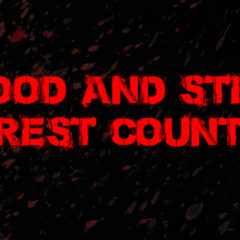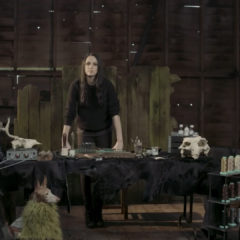The making of the documentary “Surgery on the Sixth Ring of Saturn”
Words – Michael Maniglia
My brother Frank Jr. has been producing, shooting and editing films for as long as I can remember. Our father Frank Sr. (a producer) took him in at an early age to replace his then Director of Photography George Volmer. My brother took to the “set life” and exotic locations immediately, thus was born a lifetime of world travel and filming on location in far flung locales. Frank took me under wing decades ago as I to started to make films independently and take up cinematography as my day job.
Frank and I have been working together now for close to 25 years. His body of
work has both evolved and developed into a style that can be categorized as nothing short
of world class. So when he asked me to be part of a project about Dr. Glenn Geelhoed aka
Dr. “G” and his NGO “Mission2Heal”, I was in. Despite Dr. G’s history and amazing life’s work,
no one has done a documentary on him or on what he’s accomplished – which struck me as
strange. I thought this to be an incredibly underappreciated story, as did everyone else
on our production team. Anne Mathis took the reigns as producer and our long time
colleague Gary Christian joined the small crew as co-producer and sound mixer.
Gary possesses a multi-class certification in guerilla filmmaking
that spans decades – his chops on location and in the edit bay rival most.
Challenged by a low budget and numerous unknowns that included travel, lodging and scheduling factors – we decided to do it anyway and make a go at capturing what it is that Dr. G and his foundation have been doing for 50 years.
Our A camera was a Sony F5 coupled with a 7:1 Canon zoom, our B camera was an Arri Alexa. Gary brought his Cooke primes. We traveled with a host of suppot gear: a Canon 5Dmkiii, a Medium format Fuji, 2
drone systems and a Movi Pro gimbal.
The journey lasted close to 20 days. The vast majority of those were spent ping-ponging along the trans Mongolian railway AKA the “UBRR” or the Ulannbaatar Rail Road. This soviet era enterprise was built by the Russians and now is split 50/50 with the Mongolians in a partnership that goes back 80 years. Operating from a tiny berth that has not been updated in 65 years was in a word – challenging.
Working in a post-soviet satellite country is “interesting”. The Mongolians
are incredibly resilient, hard working people with a deep history – so capturing unique stories and
imagery was not a problem. Being hosted in such surroundings made our work both easier
and more constricted at once; embedded with a group of international volunteers whilst covering
the story, the “B” stories and everything in between afforded us little down time as the
days stretched well past the twelve hour mark all week. Dr.”G” has been conducting
missions in the developing world his whole life, he has no time
for people complaining about cold showers and food that most westerners would
consider a dare.












